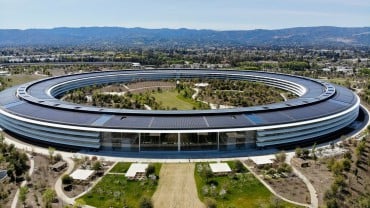3 min read
![]()
History of the Silicon Valley goes as far back to ancient 1951 when the dean of the School of Engineering at Stanford, Frederick Terman, has spearheaded the creation of the Stanford Industrial Park. Place where Stanford University was leasing the office space to nascent high-tech companies. Hewlett-Packard, General Electric, Eastman Kodak, and Lockheed were some of the very first tenants.
It was also a place where the silicon transistor was born, integrated circuits, MOSFET, the concept of the Intergalactic Computer Network, video games, and many other things without which we couldn’t imagine the modern life. Once it was a hotbed of innovation, the forefront of technological progress, today it is a shadow of its former self.
Silicon Valley today is more of a state of mind
Though the southern part of the San Francisco Bay still exists, and towns like Palo Alto, Cupertino, Menlo Park, Mountain View, Sunnyvale, and others of the Santa Clara County; Silicon Valley today is more of a state of mind than a physical place.
Back in the day, it was inhabited by people who had extraordinary talent and knowledge of everything techy and sciency, the geeks. Today, by know-it-all Bros who will from time to time get some very bright ideas.
For example to make a steel one person cigar-shaped submarine for rescuing people trapped in an underwater cave. And to pretend that it can swing around the bend in a submerged tunnel, where a U shaped bend is roughly twice the circumference of the submarine. And when subjected to the public criticism of such an “ingenious” piece of engineering, the Silicon Valley mentality demands that one hurls the most abhorrent insults at one’s critics. After all the Bro knows it all, he’s a software engineer.
We come to Elon Musk
And yes, Elon Musk is a prime example of everything that is wrong about the Silicon Valley mentality. That, born in the primordial soup of buzzwords and overhyped software applications, arrogant attitude that any problem in the world could be solved by a software engineer.
But reality has a nasty habit of rearing its ugly face. Especially when software engineers try to solve hardware problems.
For example Tesla Model 3’s rear wheel arches.
![]()
According to Sandy Munro of Munro and Associates, a manufacturing analyst company with analyzing more than 400 models of various manufacturers under their belt, they are made out of 9 separate parts which are welded, glued or riveted to each other. Other car manufacturers make this body part out of a single piece of sheet metal.
Also, Model 3 features some of the body sub-assemblies which are made out of parts joined together in several ways, welding, glueing, riveting or bolting. Sometimes using all four of them. Something which is utterly foreign to other car manufacturers, who prefer to use one joining technique throughout the sub-assemblies as such a solution keeps manufacturing costs as low as possible. Overall, Mr. Munro has suggested 227 practices which are standard for car manufacturing, and which would lower production costs of Model 3 by at least $2,000. “This body is their single biggest problem. It’s killing them.” Those are the words of manufacturing analyst, Sandy Munro.
But, why is it so?
By all appearances because Tesla has a corporate mentality characteristic for Silicon Valley. From what an observer can deduce, they prefer to hire software engineers over car engineers. While in the past five years many big engineering names from the likes of Ferrari, Mercedes, BMW, Peugeot… were poached by their competitors, none of them was snatched by Tesla.
By all appearances, Tesla is throwing software engineers at car manufacturing problems. And those boys lack the old school knowledge of car engineering and production. But they have a quite ample attitude. For example, about their Autopilot system. On the official webpage, it is described quite dubiously capable, even though featuring a warning that the Autopilot features “do not make the vehicle autonomous”.
Fake it till you make it
The system is touted as having 40x computing power of the previous system, features the Autosteer+, it is twice this and thrice that, and all “new Tesla cars have the hardware needed in the future for full self-driving in almost all circumstances”. And that is the lingo of Silicon Valley mentality, overstate everything no matter what, and curb the confusing and often misleading language just enough to satisfy the regulators. Convince the potential customers that your widget is the life-changing experience, without which their lives have no meaning.
The Silicon Valley Mentality of Boys.
Disruptiveness, insurgent, start-up, “fake it till you make” it are the epitomes of it. It’s a place where everyone can be miserable. Where working “9 to 5” means from 9 am to 5 am. Place where every CEO is the man who will fundamentally change our world and way of life with his “disruptive app”.



Leave a Reply